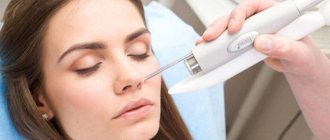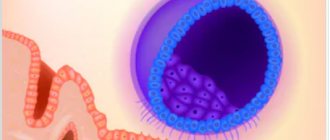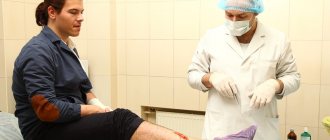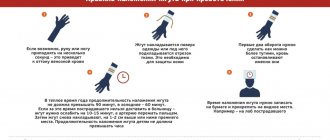A gentle blush and glowing skin are the result of self-care and good blood circulation on the face. But rosy cheeks are not always a sign of health. Unfortunately, sometimes unpleasant red dots and spider veins begin to appear on the skin. This is rosacea. It can appear all over the body. But such “stars” on the face (in fact, these are dilated blood vessels) worry us most of all. And then we turn to medical cosmetology to remove the capillary network on the face. This redness is caused by dilated blood vessels that extend almost to the surface of the skin. Most often, this pathology overtakes those with thin and delicate skin. They should be especially careful when carrying out many procedures, chemical peels and using strong scrubs. Sensitive skin reacts most acutely to such intervention. And besides this, such a vascular network on the face does not have the best effect on our perception of our own appearance.
Modern cosmetologists offer an effective means of combating the manifestations of rosacea, allowing you to restore a healthy natural glow and an even, fresh complexion. Removing blood vessels with a laser is a painless and safe way to get rid of spider veins.
In this article, we will study in detail what rosacea is, why it manifests itself, what methods besides laser therapy exist to remove it and achieve ideal skin, and is it easy to remove the vascular network on the face?
Cuperosis and vascular network on the face
As we mentioned earlier, this is a superficial manifestation of blood vessels on our skin. Many things can provoke this effect. An elementary increase in temperature, a contrasting transition after a winter street and frost into a warm room, excitement, stress or another reaction of the body when blood circulation increases and blood vessels lose their elasticity and expand. All this can appear on the surface of the skin in the form of unpleasant reddish “patterns”. They are often accompanied by side effects that further negatively affect the condition of the skin: the skin “burns” and dries, peeling and itching appear. Sometimes such irritation even leads to skin injury. All this is very sad and does not contribute to a good mood and confidence in one’s beauty.
Make an appointment at the clinic on Vasilyevsky Island
Sign up
After removing blood vessels on the face with laser
The condition of the skin after laser treatment depends on many factors. Typically, there will be redness and slight swelling, especially if a large area is treated. When touching the skin, discomfort is possible, which lasts from several hours to 1-2 days. The sensations after a cosmetologist’s work are similar to those that occur after excessively long exposure to the sun. Therefore, you should not plan any activities for the period after the procedure. During this period, it is important to rest and recover.
To relieve discomfort, you can apply a cold compress to the treated area. However, you cannot use ice in this case. In addition, during the recovery period, it is advisable to sleep with your head on an elevation so as not to increase tissue swelling.
After a week, the skin may darken and bluish-purple spots may appear. This is a normal recovery process, so don't be alarmed. You just need to be prepared for the fact that during the recovery period you will have to stay at home, avoiding social events. The use of makeup is also undesirable.
Skin care during the recovery period. Until the skin is completely restored, special care will be required. The doctor will select the specific drug. As a rule, a vaseline-based emollient ointment, such as Aquaphor, is prescribed. It is also necessary to use moisturizers and sunscreens. To avoid complications, it is not recommended to go out in the sun without UV protection for at least a month. It is advisable to select clothing that will protect the treated area from radiation.
Vascular network on the face: causes and treatment
The manifestation of rosacea is a fairly common phenomenon that affects both women and men all over the planet. The latter, perhaps, do not show this so much, which is why the weaker sex often turns to doctors and cosmetologists, because for a woman a woman’s appearance plays an important role in her inner sense of self.
Internal reasons for the appearance of such a mesh include:
- state of the vascular system;
- diseases and pathologies of the endocrine system;
- genetic predisposition and heredity;
- pathologies of internal organs (for example, the liver, gastrointestinal tract and even the heart);
- use of hormonal drugs and contraceptives;
- high blood pressure.
Even stress can provoke an intensification of these causes and a worsening of the situation: strong feelings are not the best tool for stable and smooth functioning of our heart and blood pressure. It has been proven that nervous situations have no less weak effect on the stomach and pancreas.
For those who smoke and drink alcohol (both of which also greatly affect the vascular system), the manifestation of blood vessels and the appearance of “stars” is a common occurrence. It’s not surprising that bad habits affect the functioning of our body and appearance. Nicotine and alcohol get inside and slowly destroy a healthy body. It's really sad when the effect of this exposure affects the skin.
Let's now touch on the external factors that cause vascular networks to appear on the face. How to get rid of their influence and help your vascular system work better - this topic deserves a separate discussion. Previously, we have already briefly listed the external causes of the appearance of “stars” and unnatural redness of the face, now we will study them in more detail. After all, if you eliminate them or reduce them to a minimum, you can, together with special cosmetic procedures, get rid of rosacea and visible blood vessels on sensitive skin.
It's no secret that both hot and cold water have a strong effect on our blood circulation and blood vessels. Many have been taught that a contrast shower is wonderful and useful. It is true, but not for everyone. For thin, delicate skin, it can become stressful and provoke unhealthy manifestations such as spider veins. Surely you are familiar with the feeling of heat on your cheeks when you enter a warm room from the cold? In essence, this effect is very similar to a contrast shower and also contributes to the appearance of rosacea.
If you are exposed to active sun too often and stay in direct sunlight for a long time, you, unfortunately, can also get spider veins. “What,” you ask, “shouldn’t sunbathe at all?” You can sunbathe, get natural ultraviolet light and vitamin D - all you need is:
- apply protective agents;
- soften and moisturize the skin afterwards;
- cover your face;
- Avoid the sun when the sun is at its zenith.
Such “tanning” is especially dangerous in countries that are closer to the equator. The influence of the sun is most dangerous there, and the consequences can be sad and result not only in the “stars” of blood vessels on the face and body, but also in blisters and burns. You need to be more careful with the bathhouse and steam room - places where external heat also accelerates the blood in our body.
We described the external temperature effect and partially answered the question of why vascular networks appear on the face. However, that's not all. Even the use of a strong and active scrub if used incorrectly, chemical peeling can injure the skin, make it thinner and weaker, severely disrupt the top layer, allowing red blood vessels to come to the surface. But the risk of rosacea may also occur for those who protect themselves from the sun and scrubs. The group of potential “victims” also includes those who lead a sedentary lifestyle, are overweight, or, conversely, expose themselves to excessive physical activity. All this has a direct connection with blood circulation, the heart and the load on blood vessels.
Bleeding from the nose and paranasal sinuses
Bleeding from the nose and paranasal sinuses is quite common and can be caused by many reasons.
The abundance and duration of bleeding depends on how deep the capillaries are located from the mucous membrane of the nose and sinuses. The deeper the vessels are, the more difficult it is to injure them, but the more difficult it will be to stop the bleeding. Factors that cause bleeding include:
- injuries and damage to the nose or its mucous membrane;
- diseases of the nose and nasopharynx;
- benign and malignant formations in the nasopharynx;
- high blood pressure;
- stress, nervous tension, overwork.
The most commonly diagnosed cause of nasal discharge is high blood pressure. In this way, the body tries to reduce tension in the blood vessels of the brain and prevent a possible stroke. This condition is more common in older people. As soon as the blood pressure returns to normal, the bleeding stops. If such pressure surges occur frequently, you should consult a doctor to diagnose the body and find out the causes of high blood pressure.
Injuries and damage to the nose are another “popular” cause of bleeding. Such bleeding is especially common in children. The strength of the blood vessels in the nose varies from person to person. For someone, for example, simply blowing their nose is enough to damage blood vessels and cause bleeding from the nose. With severe injuries to the nose, the process of stopping bleeding is quite long and problematic. The bad habit of picking your nose, getting a foreign object into the nose (buttons, beads, elements of toys), severe blows and bruises, thermal and chemical burns - all this can also lead to injury to the nasal mucosa.
Friends! Timely and correct treatment will ensure you a speedy recovery!
Any inflammatory process in the nasal cavity and paranasal sinuses weakens the walls of blood vessels, so it is not surprising that diseases of the nose and nasopharynx cause nosebleeds. Diseases such as rhinitis, sinusitis, ARVI, influenza, scarlet fever, measles and others can provoke bleeding. Blood diseases (anemia, leukemia, hemophilia), kidney disease, heart disease, and sepsis can also lead to nosebleeds.
Make an appointment right now!
Call us by phone or use the feedback form
Sign up
Frequent use of vasoconstrictor drops can also lead to constant nosebleeds. In this case, you need to stop using this drug and switch to other drugs.
In cases of oncological diseases (cancer, osteoma, polyps), bleeding from the nose and paranasal sinuses occurs quite often.
Also, nosebleeds occur when hormonal levels change (puberty, pregnancy, menopause).
In any case, eliminating the symptom should begin with a visit to the doctor, taking measures to stop the bleeding and diagnosing the cause that caused it.
Capillary mesh on the face: tolerate or remove?
You probably know and have seen where such a mesh pattern on the face is most pronounced. Most often, patients come to us who have thin red lines of blood vessels appearing on their face. The cheeks, nose, and sometimes the chin or forehead are especially affected. This not only complicates the health situation and makes you think about the state of the cardiovascular system, but is also an aesthetic problem.
When thinking about removing capillary mesh on your face, you must understand that procedures and doctor’s advice alone will not be enough. It is important to minimize the impact of internal and external irritants to help your skin recover, strengthen and glow.
Modern clinics offer various ways to remove venous mesh on the face:
- photocoagulation (laser exposure);
- electrocoagulation (exposure to electric shock);
- phototherapy (there are different techniques);
- ozone therapy (exposure to ozone gas)
- sclerotherapy (introduction of special compounds directly into the vessels);
- radio wave surgery.
All methods and techniques have their own specifics. If you decide to remove the vascular network on your face, you should choose them together with a qualified specialist, preferably one who has a medical education and experience in working with similar cases. Don't be afraid to ask questions, because we are talking about your health and appearance.
In our clinic, all cosmetologists are educated in the medical field and know how to select the right treatment for spider veins. We practice laser removal. The method of using a laser to solve the problem of vascular pattern is called effective, powerful and safe.
How to remove capillary mesh on the face with maximum effect
Firstly , any doctor will tell you that one procedure will not be enough. And the point is not at all that the “stars” will not disappear the first time. You will see positive results after the first session. Depending on the intensity of rosacea, skin sensitivity, and individual characteristics of the body, you may be prescribed not one manipulation, but several. Even when you seem to have already gotten rid of the line of blood vessels appearing on your face, you will be advised to repeat the sessions after some time to consolidate the effect. The duration of the procedure is only a few minutes; you can first do a gentle peeling to remove excess epidermal cells and the fatty layer. A repeat session will be scheduled for you no earlier than in 3-4 months.








